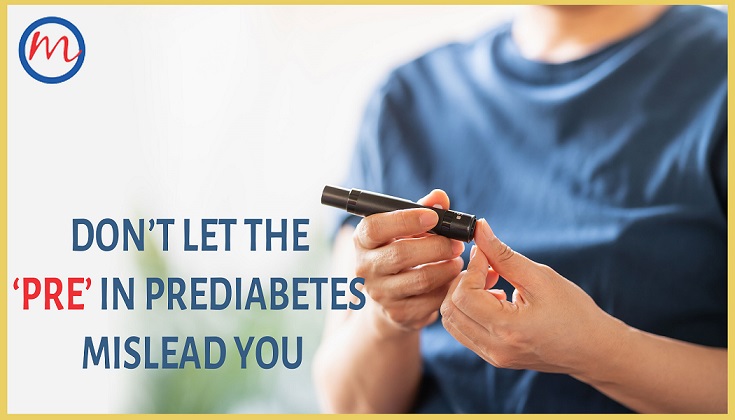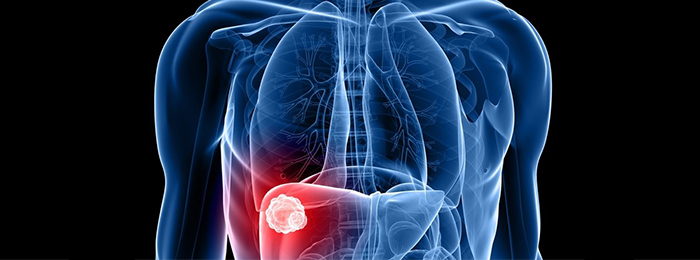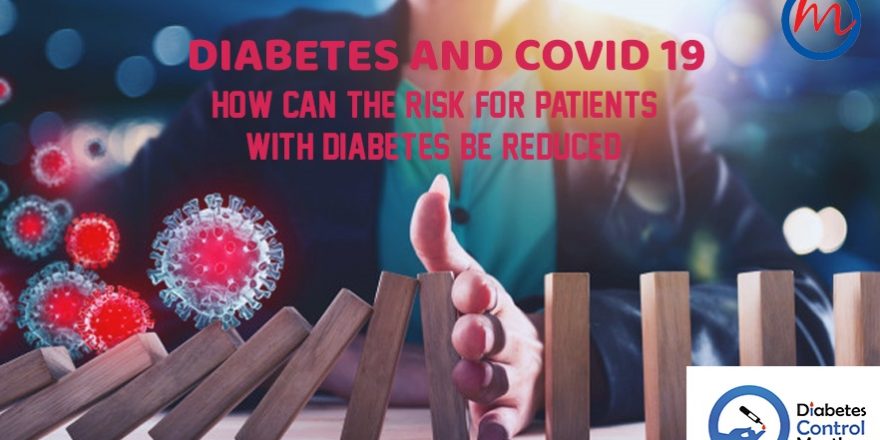What is prediabetes and how to control
What is prediabetes
Prediabetes means your blood sugar levels are higher than normal. You have diabetes when your blood glucose levels reach a certain level. This is a disease that occurs when your body does not make or use the insulin hormone properly. It causes too much glucose to build up in your blood. There is a threshold above which too much glucose in your blood will be harmful to your body over time.
Prediabetes is a state in which your blood glucose levels are higher than normal, but not high enough to be diagnosed as diabetes. People who develop type 2 diabetes usually have prediabetes, which precedes diabetes, as the first step in the condition’s development. For those with prediabetes, the risk of developing type 2 diabetes is greatly increased. Also, you have an increased risk of developing other health conditions, including heart disease or stroke.
It’s not without reason that diabetes is called an invisible killer. It doesn’t usually develop all of a sudden, but silently and almost imperceptibly. The body goes through long, slow and invisible biochemical changes that finally lead to diabetes. This process is called prediabetes when your blood sugar levels are consistently higher than normal, but not high enough to cause symptoms or to be diagnosed as diabetes. And it is still possible at this stage to prevent the slide into full-blown diabetes.
Is prediabetes something that can be prevented or avoided?
Prediabetes and type 2 diabetes can be delayed and, in some cases, even prevented. When people are overweight, losing weight and maintaining a healthy diet and exercise are the usual methods used to manage the condition. Having prediabetes or diabetes for a longer period of time increases the risk of future health issues. As with just having the disease itself, just postponing the onset can help your health.
Treatment for prediabetes
The most important aspect of treating prediabetes is following the same guidelines that you would use to prevent diabetes: lose weight, exercise, and eat a healthy diet. These three things can help control your blood sugar levels and keep them from getting higher. Some people’s blood sugar levels can decrease when they eat sugary foods. People who are prediabetic can reverse the condition by making a few changes to their diet and lifestyle.
Don’t Let The ‘Pre’ In Prediabetes Mislead You
The terms :
The ‘pre’ in prediabetes is misleading. It hides the seriousness of this condition, It is, however, a risk state that defines a high chance of developing diabetes. Although not everyone with prediabetes progresses to diabetes, the condition needs intervention. That is because the same factors that increase the odds of getting diabetes also increase the risk of prediabetes. In a technical report published in 2006, the World Health Organization used the term “Intermediate Hyperglycaemia” for pre-diabetes. Similarly, an International Expert Committee convened by the American Diabetes Association in 2009 used the term, “High-Risk State of Developing Diabetes.” Yet, for brevity and convenience, the term ‘prediabetes’ has stuck.
Types of Prediabetes:
There are two types of prediabetes: Impaired Fasting Glucose (IFG) and Impaired Glucose Tolerance (IGT). Both occur when blood glucose levels in the body are elevated, but not enough to prompt a diagnosis of diabetes. Effectively, a person with IFG is not able to process glucose as efficiently as they should be able to. IFG is present if the glucose level is 100 to 125 mg/dl (126 mg/dl is diagnostic for diabetes) after an overnight fast of at least 8 hours. IGT is present if people have a blood glucose of 140 to 199 mg/dl after consuming 75 grams of glucose during a 2-hour oral glucose tolerance test (OGTT)
What the magnitude of the problem?
Let’s check the numbers: it is estimated that 5-10 percent of people with prediabetes progress to diabetes every year, while the same proportion converts back to normal blood sugar levels. There is also evidence to indicate that perhaps up to 70% of people with prediabetes eventually develop diabetes. Not surprisingly, the prevalence of prediabetes is increasing worldwide. It is projected that over 470 million people will have prediabetes by 2030. According to the Centers for Disease Control and Prevention, about 84 million adults in the US have prediabetes in 2015 and 70 percent of them will develop diabetes in the long term.
How common is prediabetes in India? The first study to present the incidence of prediabetes in Indians came from The Chennai Urban Population Study (CUPS) epidemiological study. In a report published in 2008 (J Assoc Physicians India) the researchers, led by Dr. V. Mohan, informed that the rate of pre-diabetes was 13.1 per 1000 person-years (meaning, approximately 13 cases would be expected for 1000 persons observed for 1 year). What’s more, Mohan et al. reported that 40.5% of prediabetes participants converted to type 2 diabetes (T2DM) within 8 years of follow-up.
By 2015, Dr. R.M. Anjana of the Madras Diabetes Research Foundation and Dr. Mohan’s Diabetes Specialities Centre, in a 10-year follow-up of the Chennai Urban Rural Epidemiology Study (CURES) found the rate to be a whopping 29.5 per 1000 person-years. In 2017, Anjana et al. reported the results of the ICMR-INDIAB, a large, multi-centric, cross-sectional study in 15 states of India (published in Lancet Diabetes Endocrinol). It documented a high prevalence of prediabetes as compared to T2DM (24.7% vs. 7.3%). The high rate of prediabetes, compared to T2DM, signals that prediabetes, too, is at an epidemic trend in India. Moreover, it signifies that the diabetes epidemic is far from over.
The risk
Both prediabetes and diabetes are related to a poor lifestyle. Scholars have been repeatedly highlighting obesity (especially abdominal obesity), hypertension and age to be the prime risk factors for both. These, superimposed on a genetic predisposition, increase blood sugar level and leads to prediabetes. Having consistently high blood sugar levels for many years make the cells increasingly resistant to the effects of insulin, the hormone that regulates blood sugar. Prediabetes is also associated with the dysfunction of β-cells (a type of cell found in the pancreas, that synthesizes and secrete the hormone insulin). Further rise in insulin resistance and reduction in insulin secretion over time result in the development of full-blown diabetes when the pancreas is no longer able to compensate by producing more insulin.
Prediabetes is a high-risk state for developing not just type 2 diabetes but also heart disease and stroke. Thus the famous saying that ‘The clock for macrovascular diseases start ticking at the stage of prediabetes’
Here is the list of risk factors for Prediabetes:
- overweight or obesity
- age 45 or older
- a parent, brother, or sister with diabetes
- physical inactivity
- high blood pressure and abnormal cholesterol levels
- history of heart disease or stroke
- polycystic ovary syndrome (PCOS)
- metabolic syndrome (a combination of high blood pressure, abnormal cholesterol levels, and large waist size).
Along with these, other risk factors may include:-
- excess alcohol intake
- smoking or tobacco chewing
- medicines like glucocorticoids, antipsychotics and some medicines for HIV
- hormonal disorders, such as Cushing’s syndrome and
- sleep apnea.
The tests
Typically, people with prediabetes do not show symptoms, are unaware that they have it and hence never have their blood sugar tested. That’s because prediabetes can only be detected through screening (screening means hunting for hidden disease in the absence of any outward signs or symptoms). Experts generally recommend screening for most adults from age 30 and before that (even about 20 years) if one is overweight and has additional risk factors for prediabetes or type 2 diabetes.
The Madras Diabetes Research Foundation has evolved the Indian Diabetes Risk Score (IDRS) for easy detection of prediabetes and diabetes. It’s a simple risk score, which has three questions and a waist measurement. For instance, if the risk score is 60 or above, it means there is a very high risk of developing diabetes. An OGTT test, to measure your body’s response to glucose, is then recommended to rule out diabetes. Even a random blood sugar test, or a fasting blood sugar test, can detect the seriousness of the condition. If the risk score is 30-50, the risk of having diabetes is moderate. It is still recommended to have the above check-up. If it is below 30, the risk of diabetes is deemed low.
Prevent diabetes by modification lifestyle:
The good news is, for people with prediabetes, lifestyle modification is the cornerstone of treatment: it is estimated that about 40%–70% of prediabetes risk can be reduced by healthier eating, increasing physical activity, and reduction of weight if overweight or obese.
The most common ways to manage prediabetes are:
- Having vegetables, fruits and high-fiber foods, such as whole grains
- Having fewer foods with carbohydrate or added sugar and unhealthy fats, less than 1,500 mg of sodium a day and decrease alcohol intake
- By being active regularly: about 30 minutes of any activity that raises your heartbeat to your target rate, such as walking most days of the week, is recommended.
- A 5 to 10 percent weight loss can reduce your risk by nearly 60%.
- Taking medication if your doctor recommends it.




